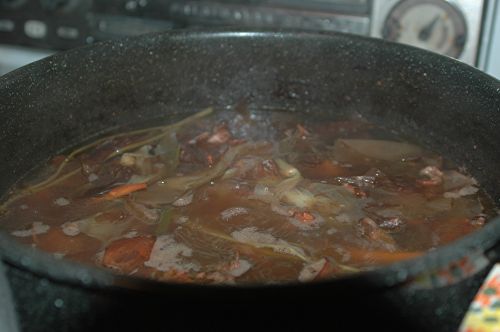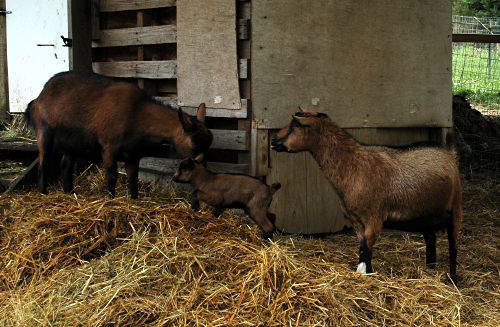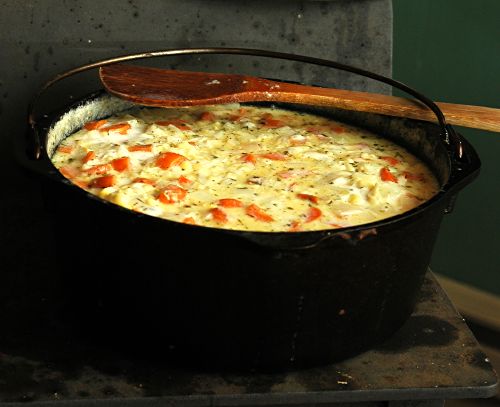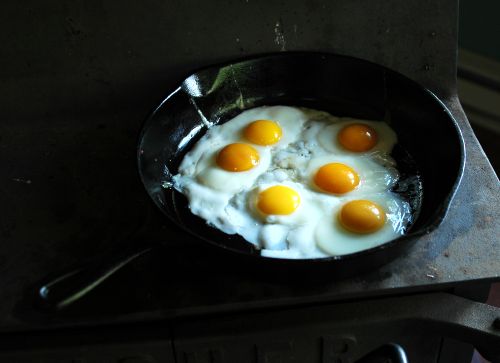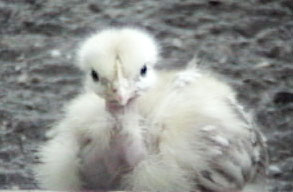
The chicks with no neck feathers are Naked Necks, also known as Turkens for their resemblance to turkeys.
Mixing up the chicken genetics
Got some new babies today, an experiment with full-size chickens. Two Welsummers (patterned ones) and three Turkens (aka Naked Necks). With any luck, tonight I will slip these under the broody hen whose eggs were all duds, and she will accept and raise them. Without luck, we’ll have chickens in the living room for the next month or two.
The “Turkens” are not actually turkey-chicken crosses, they’re just called that because their naturally bare necks, which tend to turn red as they age, make them look a bit like turkeys.
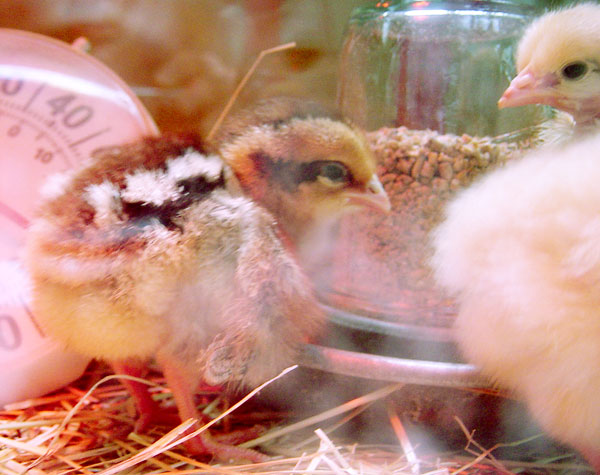
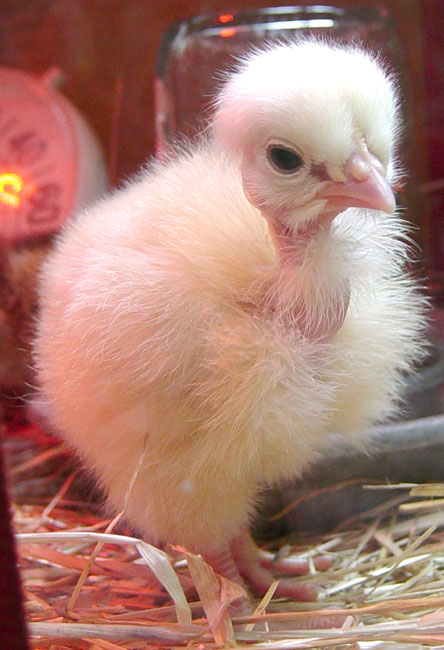
Peeps!
Braided Bower Farm, animal population 31 36 37*:
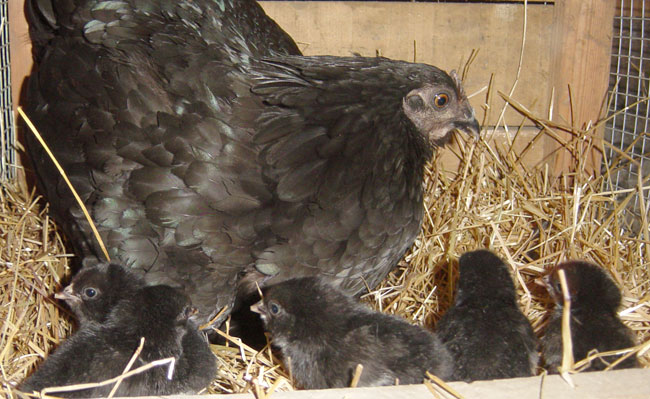
* I missed a hidden peep the first time I saw them
Website makeover!
![]() We’ve finally brought our website into the 21st century, with an updated design and some new features!
We’ve finally brought our website into the 21st century, with an updated design and some new features!
One of the reasons we have this blog is to share what we learn with others who are choosing a “simpler” life, just as we’re constantly learning from other homesteaders’ blogs. With that in mind, we’ve changed a few things around to make it easier to find what you’re looking for – while keeping the blog format so people making similar journeys can go chronologically through our doings, which places the whole thing in context.
If that’s not enough for ya, I can probably put a button on the site which when clicked will launch a random slideshow of cute livestock photos =)
Please let us know if anything about the new look & layout is/isn’t working well for you!
Scrap stock
This GIANT pot of stock is simmering away on our stove. Yes, that is our (guesstimate: 3 gallon) water-bath canning pot – it was the only one large enough to hold all of the bones and veggie scraps I had accumulated.
In this pot are: chicken carcasses (our own chickens), chicken feet (our own chickens), random chicken bones from random dinners (not our own chickens), beef bones, pork bones, scraps/skins/ends from all the veggies we’ve eaten over the past month or so (onion trimmings, onion skins, garlic trimmings and skins, leek greens, carrot ends, kale stems, basil stems, onion greens from the onions in the garden that the chickens tried to kill, and whatever other veggie scraps I deemed it necessary to save at the time – all saved in a ziploc bag in the freezer, until such time – like now! – as I was ready to make use of it), and saved (frozen) cooking water from previous steamed veggies (kale, onions, etc).
Oh yeah… it’s gonna be good!
And on the other burner, for tonight’s dinner: quinoa simmering in previously-preserved chicken stock (from our own chickens), to be served on a bed of fresh salad greens from the farmer’s market and topped with the leftover pesto from yesterday’s dinner (basil from the farmer’s market, onion greens from the garden, garlic from winter storage, local hazelnuts from winter storage, homemade goat milk feta, and olive oil.)
Sigh… life is good…
ETA: I forgot – the stock also contains several eggshells (from our chickens), a good dose of apple cider vinegar (it helps draw the minerals out of the bones and eggshells), and a couple of corn cobs for added flavor. It’s still simmering away, after about 20 hours! Soon I’ll strain it out into jars to cool. As it cools, the fat will rise to the top – if there’s a good amount of fat, I’ll scoop it off into another container to use as a cooking fat (otherwise I’ll just leave it as is). Then into the freezer the jars will go, just waiting to be pulled back out for some future meal!
Citrus of the North, ale, and pretty mushrooms
The latest batch of beer is a light one, made with amber malt and the pale, growing tips of Douglas fir trees in place of hops. It felt like a dice roll, but turned out to be one of the nicest brews we’ve made yet; light, citrusy (fir even contains vitamin c!), perfect for summer days. After several hours of fencing work today, I drank one and it passed that important test with flying colors.
Here’s the delicious secret ingredient:
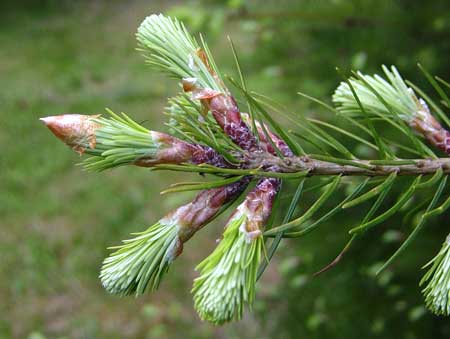
Another citrusy plant we’re blessed with an abundant supply of is wood sorrel. A little mouth-puckering to just eat a handful, but delightful in salads, especially ones that also feature the bitterish flavors of dandelion and the like:
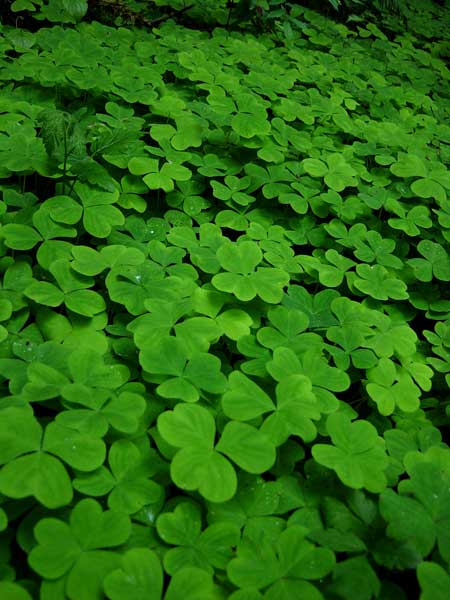
and of course, we’re surrounded by vast hordes of mushrooms, almost all of which resist my attempts at identification, but are still fun to look at:
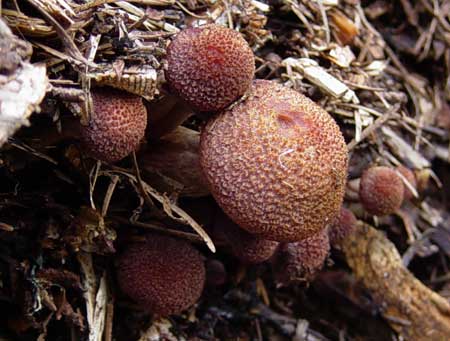
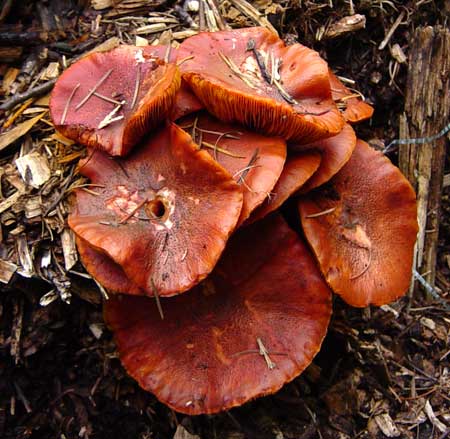
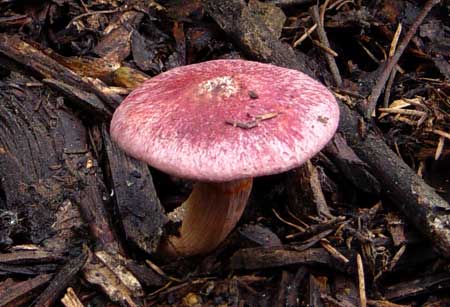
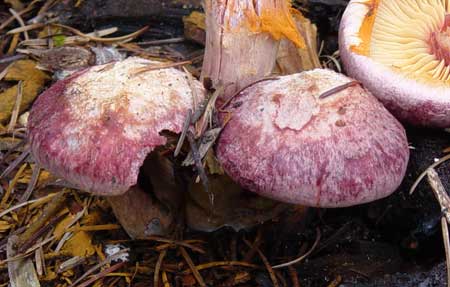
Half-homemade cheese press
“Hard” cheeses such as chedder require a press to expel the moisture – just the right amount of moisture. Too much pressure, and you end up with a concrete block (yes, we have.) Too little pressure, and retained moisture nourishes unwanted bacteria and molds (yes, it smelled like the devil’s armpit.)
The cheese press we’ve been using is based on a spring. You turn a handle to put pressure on the apparatus, and when the spring is fully compressed, that’s 50 pounds. For 10, 20, etc pound presses, you guesstimate how far the spring is between fully expanded and fully compressed. It wasn’t working for us.
We happened upon this small basket with a disk that fits inside it at our favorite homebrew supply in Eugene:
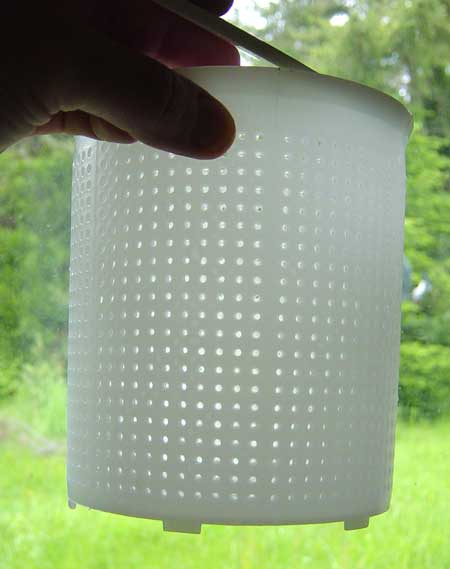
That is MUCH better than the solid, slightly off-round PVC pipe that the spring press works with! Displayed with it was $200-something worth of fine craftsmanship and clever engineering in the form of a rather complicated lever device. It looks great, but we’ll stick with the $6.95 basket and see what we’ve got.
In preparation for such a find, I had already thrift-stored a set of barbell weights in 5 and 10 pound increments…but they are too big to just set on top of the follower disk on top of the cheese.
The solution? An empty tobacco can, a stick that was lying around in the yard, and some concrete:

The tobacco can fits neatly on top of the pressing disk, and the weights fit over the post on top. It weighs 4 pounds and will probably get a pound added somehow as cheese instructions tend to be in 5 pound increments.
We’ll let you know how it works!
Lamb stew
…it’s what’s (was) for dinner!
Deck Family Farm grass-fed lamb, Horton Road Organics carrots (from winter storage), frozen sweet corn from last summer’s garden, garlic from a local farmer (also from winter storage), store-bought onion, fresh rosemary, oregano, spearmint, yarrow and bay leaf (all from our garden and/or yard), water, red wine, lamb fat (saved from a previous cooking of lamb), olive oil, dash of shoyu (soy sauce), kelp, salt and pepper… cooked in our cast iron dutch oven, and simmered on our woodstove for several hours… yum! We both had seconds…
From the past few weeks…
Galahad (more commonly known as “You Little Weasel” or simply “Pesky”) meeting the rest of the herd for the first time, with mama Lulu keeping watch
Galahad introducing himself to cousin Isis (again, with mama Lulu keeping a close eye on things)
Sorry for the blurry image, but I love this shot… and goats love Peter!
Broodies, broodies everywhere… (The record so far was seven hens broody – i.e., wanting to hatch eggs, and therefore not laying – at the same time. I did give in and give eggs to two of them, one in each coop… 1-1/2 weeks until we have chicks!)
Nettle harvest, from a very small patch by the river – enough for a nice helping of steamed nettles for each of us with dinner! (The nettles were so tasty, I can’t even remember what the main course was…) I’m hoping to get one or two more meals from this patch before they get too large and tough.
Our first spring salad! Lettuce from the farmer’s market, volunteer arugula, spearmint and chives from our garden, wild dandelion leaves, oxeye daisy leaves (so sweet!) and purple deadnettle tops, and wood sorrel from the woodsy area by the river… eating this salad, my body sang!
Our beautiful eggs, from our beautiful hens… these are a staple in our diet almost year-round
Cooking on the wood stove
It’s finally getting warm enough that we’re only using the wood stove for a quick fire in the mornings now, just to take the chill off. But during the winter, with the fire always going, we were able to cook the majority of our meals on our wood stove.
Sigh. I’ll miss it.
Oh, I’m not complaining about the warmer weather – I’m ready for it – but cooking on the electric stove just isn’t the same…
Goulash, made with Deck Family Farm ground beef and our own canned tomatoes from last summer’s garden (the eggshells on the top level are drying for future use as chicken supplements and garden nutrients).
Corn chowder, made with our own fresh goat milk and goat cheese, and our own frozen corn from last summer’s garden. The carrots are from Horton Road Organics, a local farm.
And breakfast, fresh from our own hens!

